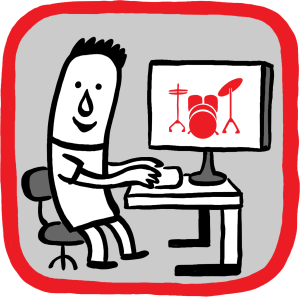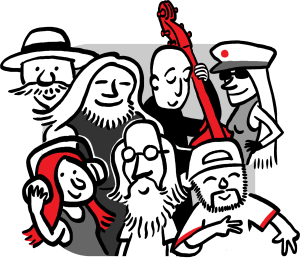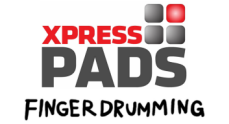Page 2 of 4
Size
One of the biggest advantages of the pad controller is its small size and its pad layout.

LIMITED SPACE?
XpressPads is THE desktop alternative to real drumming – and available at a price that you can’t afford to miss
All sixteen pads are reachable with the span of one hand. All action happens within an area of a few inches. Each pad reproduces a specific sound of one drum kit piece that is usually positioned feet away from another kit piece in a real-life drum set. On the pad controller you are able to reach each instrument sound with just minimum arm movements. This is a very big advantage, as every arm movement that a real drummer makes takes additional time, and further complicates the brain’s processing capacities.
The pads on the pad controller’s surface are the same size as each other and are arranged in a logical order, making a fairly hand- and brain-friendly layout. As a pad controller finger drummer, you only need to precisely hit equally-shaped, logically arranged pads within a 6 x 6 inch area. YOUR instrument always looks and feels the same, no matter where you play. The rebound of each pad is identical; the angle is the same for each pad.

ANYONE CAN LEARN IT!
XpressPads is much easier to learn than drumming on a real or electronic drum kit
Muscles and energy
Almost as important as the size of the pad controller is the amount of energy and the types of muscles that are necessary to hit pads on a pad controller as compared to what you need when hitting real drum kit pieces. Big muscles, such as leg and arm muscles, are slow compared to the smaller finger muscles. The muscles in our fingers are among the best trained, fastest, most precise and most flexible muscles that the body has to offer.
Although you will learn some finger exercises specifically designed for the pad controller, you do not need specific muscle training for your fingers to become strong enough for finger drumming. Your hands are natural tools, therefore, they are better suited for sophisticated tasks than the other parts of your body. It’s much easier to use them for normal-range hand movement tasks, than it is to train larger body parts to make high-precision movements that are not part of their natural activity spectrum. You are already starting out in a good position!
